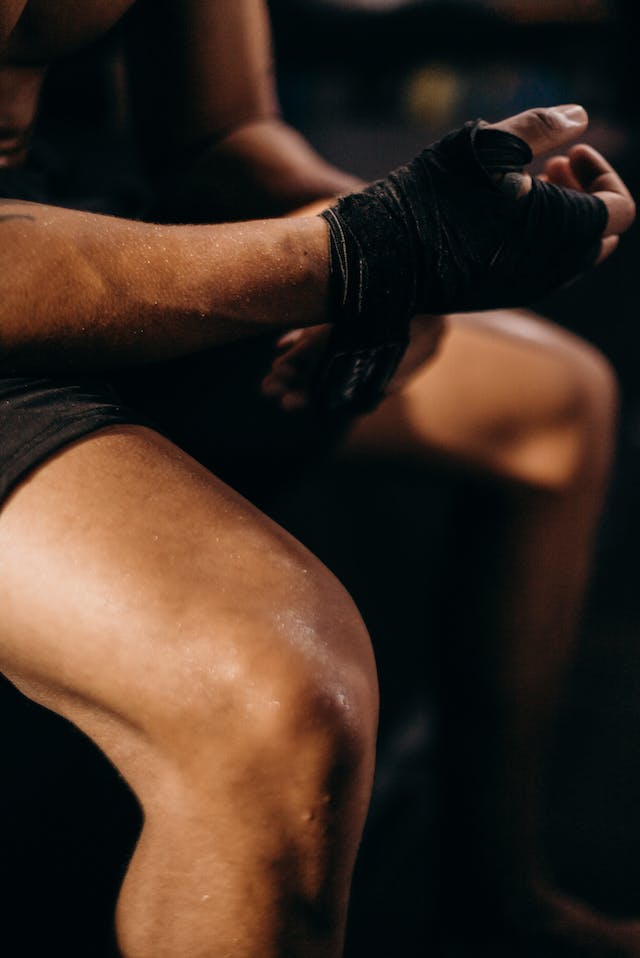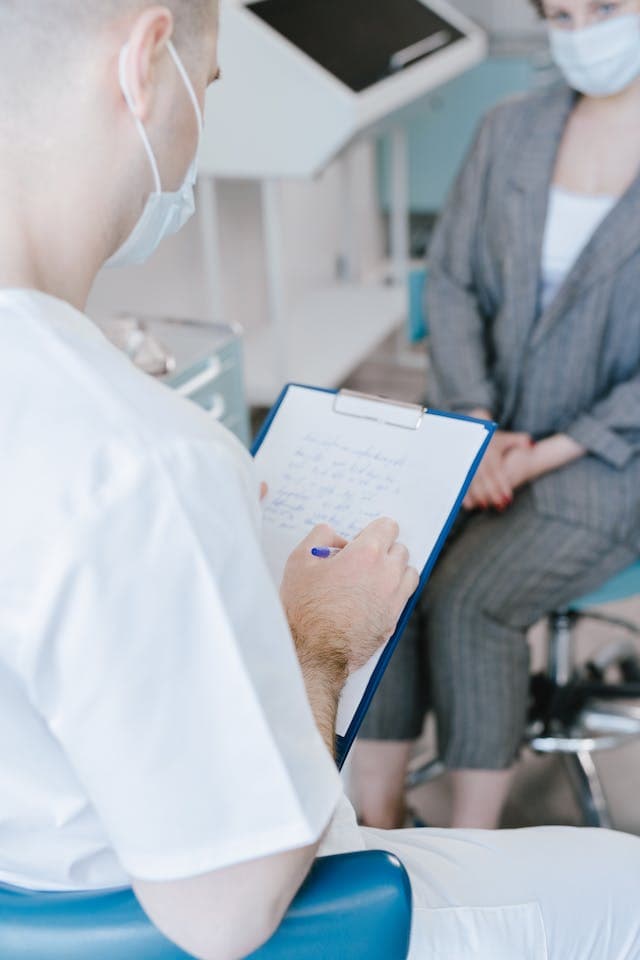Preventing Knee Ligament Injuries (ACL Injury Prevention) with Advanced Arthrometry Technology
Investigate the innovative GNRB & DyneeLax arthrometers, advancing knee injury diagnosis and ACL injury prevention. Our guide covers their uses, advantages, and real-world effectiveness in early detection and tailored care for ACL injuries. Essential for medical experts in various fields, it's a tool to improve patient care with cutting-edge technology.
Introduction
The Knee: A Critical Pivot of Mobility
The knee, one of the largest and most complex joints in the body, plays a pivotal role in our daily activities, from walking and running to bending and jumping. Given its crucial function, an injury to the knee ligaments can be debilitating, significantly impacting an individual's quality of life and athletic performance.
The Challenge: Preventing Knee Ligament Injuries
Preventing knee ligament injuries is a priority for healthcare professionals, particularly in the fields of orthopedics, sports medicine, radiology, and physical therapy. Traditional diagnostic methods, such as Magnetic Resonance Imaging (MRI), have been instrumental in assessing knee health. However, they sometimes fall short in accurately diagnosing partial Anterior Cruciate Ligament (ACL) ruptures, making early intervention and prevention challenging.
The Solution: Arthrometers in Focus
Enter the GNRB & DyneeLax arthrometers: innovative diagnostic tools specifically designed to address this gap. With proven higher sensitivity compared to MRIs, these arthrometers have revolutionized the early detection and prevention of knee ligament injuries. By providing precise and reliable measurements of knee laxity, they empower healthcare professionals to implement proactive measures to prevent further damage.
Embracing Prevention Through Innovation
In this section, we delve into how the GNRB & DyneeLax arthrometers are not just diagnostic tools, but also allies in the prevention of knee ligament injuries. By facilitating early detection and risk assessment, these arthrometers enable tailored preventive strategies, safeguarding the knees of athletes and individuals alike.






GNRB & DyneeLax: Precision in Action
How Arthrometers Work
Innovative Approach to Knee Health
By utilizing GNRB & DyneeLax arthrometers, healthcare professionals can significantly enhance their diagnostic accuracy and, in turn, devise better preventive strategies for knee ligament injuries. The combination of precision, ease of use, and high sensitivity makes these arthrometers indispensable tools in modern orthopaedic and sports medicine practices.
1. Functionality
The GNRB & DyneeLax arthrometers function by applying a controlled force to the lower leg, precisely measuring the resultant displacement of the tibia relative to the femur.
These devices offer an automated and user-friendly approach, eliminating the need for subjective interpretation and ensuring consistency across tests.
2. Sensitivity & Specificity
The GNRB & DyneeLax arthrometers stand out for their high sensitivity, especially when detecting partial ACL ruptures.
Research has shown that these arthrometers can identify subtle changes in knee laxity that might be overlooked in traditional MRI scans, making them invaluable tools in early diagnosis and prevention.
3. Advantages Over Traditional Methods
Accuracy: GNRB & DyneeLax offer precise quantification of ligament laxity, eliminating the margin of human error.
Efficiency: The tests are quick and can be conducted in an office setting, allowing for immediate evaluation.
Cost-Effectiveness: These arthrometers can be a more affordable and accessible option compared to frequent MRIs.

Precision in ACL injury prevention is a step towards a pain-free, limitless future.
Applications in Prevention
Proactive Measures for Knee Health
Understanding the risks and taking timely preventive measures is crucial in mitigating knee ligament injuries. The GNRB & DyneeLax arthrometers shine in this domain, offering invaluable insights for both athletes and non-athletes alike.
An Ounce of Prevention
By seamlessly integrating the GNRB & DyneeLax arthrometers into routine checks and preventive care, healthcare professionals can significantly reduce the incidence of knee ligament injuries. Their precise measurements and early detection capabilities make them essential instruments in the quest for proactive and preventive healthcare.
1. Early Detection of Knee Laxity
Spotting the Signs: The GNRB & DyneeLax arthrometers are adept at detecting early signs of knee laxity, which can be an indicator of potential ligament damage.
Pre-emptive Care: Identifying such signs allows for the implementation of targeted interventions and exercise routines to strengthen the knee and prevent injuries.
2. Risk Assessment for Athletes and Individuals
High-Risk Identification: These arthrometers can identify individuals and athletes who are at a higher risk of sustaining knee ligament injuries due to pre-existing laxity.
Customized Training Programs: By assessing this risk, sports medicine doctors and physical therapists can craft tailored training and conditioning programs to fortify the knee.
3. Monitoring Over Time:
Periodic Checks: Regular use of the GNRB & DyneeLax arthrometers can monitor changes in knee laxity over time, tracking the effectiveness of preventive measures.
Adapted Rehabilitation: For those recovering from an injury, these checks ensure that the rehabilitation process is on track and adjustments can be made as needed.
4. Educative and Awareness Tool:
Informed Decisions: By providing quantitative data, these arthrometers empower individuals to make informed decisions regarding their knee health and activity levels.
Prevention Awareness: Education on the importance of knee health can be reinforced with tangible data from these devices.
Together, We Achieve
Prevention is the best cure. Embrace technology to safeguard our steps and ensure a future free of knee injuries.
Who Should Use Dyneelax & GNRB?
Benefits for Each Professional:

DOI: 10.1016/j.knee.2023.03.017

DOI: 10.1016/j.medntd.2023.100254
Don’t just take our word for it
Testimonials
To all users and those interested in the GNRB devices designed and patented by the Genourob Company.
Over the last 4 years, we have been intensively working the new method of Automatic Dynamic Laximetry, LDA, with its device the GNRB.
In addition to providing a state analysis of the state of the Anterior Cruciate Ligament (ACL) GNRB Gives a functional analysis as well.
So With the GNRB it’s possible to have a Dynamic Analysis of the stiffness of the ACL pre-surgery and of the graft post-surgery. It is useful in post-op follow-up for the graft Ligamentization assessment, and therefore a good indicator of the stability of the Knee.
The device is effective, reliable and easy to use and assists to improve diagnosis and treatment of the ACL injuries.

The main interest of this tool (but not the only one) in public health is to allow primary care doctors, and especially emergency physicians, to categorize knee sprains urgently, thanks to a simple-to-use tool in just a few minutes. This classification from the first consultation into a severe sprain (with ACL rupture) or mild (without ACL rupture) allows, on one hand, to avoid unnecessary and costly additional examinations (MRI) in the case of mild sprains, and on the other hand, to immediately adapt treatment to the severity of the sprain, avoiding, for example, unnecessary prolonged immobilizations.

I the undersigned, Doctor Henri ROBERT, Knee ACL surgeon specialist, confirm that the GNRB, ROTAM & DYNEELAX arthrometers are very accurate, reliable and with the best reproducibility in the world.
The arrival of the DYNEELAX revolutionizes the possibilities of the practitioner to regularly analyse the rotational and translational stabilities of the cruciate ligaments in the knee, using a non-invasive test, before and after surgery or as a preventive measure, or after partial tears. Numerous additional applications include notably the analysis of meniscus lesions (medial or lateral) which can be highlighted thanks to the rotational tests, as well as the functional analysis of the strength of the injured tissues.
The rotational analysis is an essential breakthrough as it allows the identification of rotational instabilities which are very difficult to detect with known clinical physical tests (pivot shift test, the Dejour test, dial test...). The DYNEELAX is the result of more than fifteen years of research and development which has led to the most advanced device in this field of study on an international level.
It is essential for surgeons to know the results of rotatory tests in order to adapt ACL surgery and perform or not an extra-articular tenodesis.
As much as translational stability could be controlled manually or with small manual laximetry tools, rotation has no suitable tool to validate this (nor any reliable clinical test due to the absence of relaxation necessary to carry out these tests properly).

This is a letter detailing my/our experience with use of the Genourob Dyneelax laximeter device.
We are a high volume tertiary referral arthroplasty centre and sports medicine centre in Western Australia. We are closely associated with the Orthopaedic Research Foundation of Western Australia.
We have had an excellent experience with the use of our Dyneelax device for multiple research projects, including novel investigation of the sagittal stability of total knee replacements and revision total knee replacements. We also have numerous projects working towards examining the stability of anterior cruciate multi-ligament knee reconstructions.
Our experience working with the company has been excellent. We are literally located on the other side of the world; however, they have gone over and above to help us with training and our customer support. I cannot recommend them highly enough.
In terms of the device, it is an excellent research tool which enables us to establish quantified measurement of the sagittal and rotational stability of multiple different knee arthroplasty devices, a measurement that hereto forth was impossible. This is generating high level novel research of an international interest.

My name is Michael Rüscher, I work in the field of conservative and operative orthopaedics as an osteopath and physiotherapist! I am currently working intensively on my PHD dissertation in the field of biomechanics.
I discovered the device Dyneelax from the company Genourob in the course of my research about 1 year ago and the idea was born to write the dissertation with this laximetry on the knee joint. I have now taken over 100 measurements on operated and conservative cruciate ligaments and am thrilled with the measurement method. It is simple and very reliable to use.
In my daily work with my brother Dr. Rudolf Rüscher we evaluate the cruciate ligaments by means of MRI and immediate laximetry.
We have already had 3 patients with a described complete cruciate ligament rupture who then showed no clear instability in the laximetry measurement, i.e. less than 1.5 mm at 100 Micro Newton. So we are excited about this functional study of this laximetry.
The topic of my dissertation is "Comparative investigation of the biomechanics (laximetry by Genourob) of the knee joint with rupture of the anterior cruciate ligament after surgical and conservative treatment under consideration of economic efficiency".
I would therefore like to thank the Genourob company once again for this innovative examination device!

Your questions answered
Common questions
What is the purpose of using the GNRB & DyneeLax arthrometers?
The GNRB & DyneeLax arthrometers are designed to accurately measure knee laxity, aiding in the early detection and prevention of knee ligament injuries. These devices offer valuable insights to healthcare professionals for diagnostic and preventive care.
How do arthrometers compare to traditional MRI scans?
While MRIs provide detailed anatomical images, the GNRB & DyneeLax arthrometers can detect subtle changes in knee laxity with higher sensitivity, particularly in cases of partial ACL ruptures. They can be used complementarily with MRI scans for a comprehensive diagnosis.
Are the GNRB & DyneeLax arthrometers suitable for all age groups?
Yes, these arthrometers can be used across various age groups and activity levels, helping healthcare professionals to tailor preventive and rehabilitation programs accordingly.
How can the GNRB & DyneeLax arthrometers assist in preventive measures?
By detecting early signs of knee laxity, these arthrometers can identify individuals at risk of knee ligament injuries, allowing for timely interventions and personalized preventive care.
Can these arthrometers be used in routine check-ups and sports screenings?
Absolutely. Incorporating the GNRB & DyneeLax arthrometers into routine check-ups and sports screenings can aid in continuous monitoring of knee health and timely prevention of potential injuries.
Resources
To assist healthcare professionals in leveraging the GNRB & DyneeLax arthrometers to their fullest potential, we have curated a collection of resources. These are designed to provide comprehensive insights, from basic setup and operation to in-depth diagnostic procedures. These resources aim to facilitate seamless integration of these innovative tools into your diagnostic practice, ensuring accurate and timely identification of knee ligament injuries.
Research Articles & Clinical Studies:
2023 - GNRB® laximeter with magnetic resonance imaging in clinical practice for complete and partial anterior cruciate ligament tears detection: A prospective diagnostic study with arthroscopic validation on 214 patients.
DOI: 10.1016/j.knee.2023.03.017
2023 - Sensitivity, repeatability and reproducibility study with a leg prototype of a recently developed knee arthrometer: The DYNEELAX®
DOI: 10.1016/j.medntd.2023.100254
2019 - Anterior knee translation measurements after ACL reconstruction are influenced by the type of laximeter used.
DOI: 10.1007/s00167-020-05950-5
Instructional & Presentation Videos:
Click Here to view GNRB Tutorial Video
Click Here to view the DyneeLax Presentation Video
We are here to help!
We're here to assist you on your journey towards better health and precision in diagnosis. Don't hesitate to reach out with any questions or inquiries. Contact us today and let us guide you towards a healthier tomorrow.
Visit us
Bâtiment 60, Rue du Chef de Bataillon Henri Géret
53000 Laval
France
Email Us
yves.crystal@genourob.com
Call Us
+33 7 66 76 03 92 Whatsapp or Phone Call
